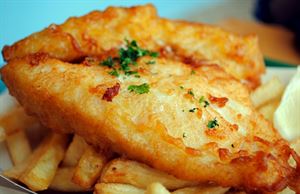Is the 40% increase of childhood cancer been caused by air pollution?
Childhood cancer is very rare - but not as rare as it used to be.
New figures show rates have increased at an alarming rate - by 40% over the last 16 years - with 10 children and young people diagnosed with cancer every day in the UK.
Even when the increase in population's taken into account, the incidence rate has still risen by 30%. It's a worrying trend, not least because it's unclear why it's happening.
However, it's thought a significant proportion of the extra cases may be linked to changes in lifestyle and environment, for both children and parents.
LEADING CAUSE OF DEATH
The new figures were compiled by Children with Cancer UK, which analysed official statistics to mark September's Childhood Cancer Awareness Month.
The charity found 4,000 children and young people develop cancer every year in the UK. It's the leading cause of death in British children aged 1-14 years, and there are now 1,300 more cancer cases a year, compared to 1998 figures, costing the NHS an extra £130 million annually.
Professor Denis Henshaw, Children with Cancer UK's scientific director, says: "These significant rises cannot be explained by improvements in cancer diagnosis or registration alone - lifestyle and environmental causal factors must be considered.
"We need a better understanding of the risk factors for cancer in children and young people, and whether there are practical measures that might reduce exposure to these risks."
COMMON CANCERS
The most common childhood cancer is leukaemia, which accounts for 30% of childhood cancers - around 500 cases a year. However, brain tumours have overtaken leukaemia as the biggest childhood cancer killer.
Children with Cancer UK says most of the rise they identified is related to teenagers and young adults, and increases have been most stark in certain cancers, with a 200% increase in colon cancer.
In addition, childhood thyroid cancer is up by 110%, ovarian by 70% and cervical by 50%.
WOMB BEGINNINGS
An initial step in up to half of childhood cancers, including leukaemia and brain tumours, is thought to take place in the womb, says Professor Henshaw, who points out that as only a small proportion of these children go on to develop cancer, "there has to be another element".
AIR POLLUTION
The International Agency for Research on Cancer (IARC), part of the World Health Organisation, has classified outdoor air pollution as a cancer-causing agent, saying it causes lung cancer and is linked to bladder cancer.
"The air we breathe is filled with cancer-causing substances," says Dr Kurt Straif of the IARC.
"Outdoor air pollution is not only a major environmental risk to health in general, it is the most important environmental cancer killer, due to the large number of people exposed."
The main artificial sources of outdoor air pollution are transportation, stationary power generation, industrial and agricultural emissions, and residential heating and cooking, notes the IARC. Professor Henshaw believes around 30% of childhood cancer in urban areas is linked with air pollution.
PESTICIDES
In 2014, the Childhood Leukaemia International Consortium (CLIC) found that when parents are exposed to pesticides during pregnancy or conception, there was an increased risk of leukaemia for their child.
Professor Henshaw says this risk applies to both the mother and the father, whose sperm may be affected. He points out the UK isn't a heavy pesticide user, unlike the US, but says "it's clearly a risk factor".
RADIATION
Radiation is known to increase cancer risk in both children and adults, and children who have radiotherapy for cancer have a slightly increased risk of developing another cancer later, although the risk is small.
Professor Henshaw says data suggests that in the UK, 5% of childhood leukaemia is linked to radon, a radioactive gas found naturally in the ground. It diffuses into open air and isn't a health hazard outside, but a house can trap radon gas inside.
However, Cancer Research UK says studies show there may only be a weak link between indoor levels of radon gas and the risk of childhood leukaemia.
ELECTROMAGNETIC FIELDS
The IARC classes electromagnetic fields (EMF), of the type associated with our electricity supply, as 'possibly carcinogenic' to humans, based on studies that reported an approximate doubling of leukaemia risk for children exposed at average levels above 0.3 - 0.4 microtesla.
The UK average in homes is well below this, at about 0.05 microtesla, and only about 2% of UK homes have average EMF levels above 0.2 microtesla.
However, Cancer Research UK says no conclusive link has been found between EMF and cancer.
DIET
Studies suggest carcinogens from a mother's diet can cross the placenta into an unborn baby's bloodstream, and Professor Henshaw says some of the carcinogens could come from processed meats and burned barbecue meats eaten by pregnant women.
"But we don't know what proportion of childhood cancer may be attributed to this," he notes.
In addition, while it's widely acknowledged that obesity can be a risk factor for cancer in adults, the IARC says excess body fat as a child is also linked to later cancers.
WHAT CAN PARENTS DO?
Eating a healthy diet full of fruit and vegetables is important for all the family, including pregnant women and children, says Professor Henshaw.
In addition, an Australian study found mothers who took folate and iron supplements during pregnancy had more than a 60% reduced risk of their children developing leukaemia.
Sending children to day care in infancy may have a protective effect against leukaemia, too. "The theory is that children are exposed to common infections from mixing with other children, and this strengthens their immune system," explains Henshaw.
The suggestion is linked to the idea that if the immune system isn't challenged early in life, it may mount an inappropriate response to infections later in childhood, provoking the development of leukaemia.
TREATMENT ADVANCES
"Children's cancer treatment is better than it's ever been, certainly for leukaemia," says Professor Henshaw.
But he points out that despite this, the number of childhood cancer deaths was the same in 2014 as it was in 2008.
"All the wonderful advances in treatment are trying to catch up with the increased incidence of childhood cancer," he says.
"Our genetic make-up doesn't change over a short time, but our environment and lifestyle does.
"I am by no means suggesting all of childhood cancer is caused by environment and lifestyle - there are clearly genetic and intrinsic effects that we can do little about. Rather, it's the increase that appears driven by environment and lifestyle."
For more information about childhood cancer, visit www.childrenwithcancer.org.uk





